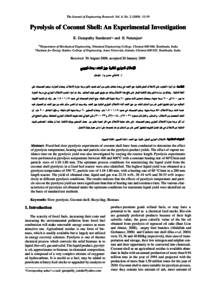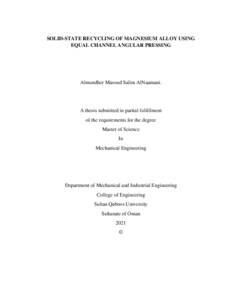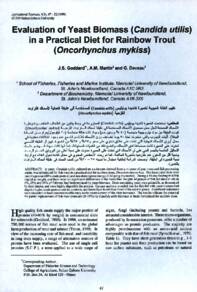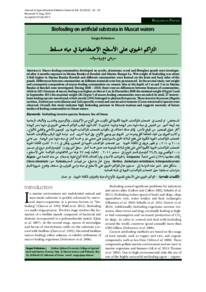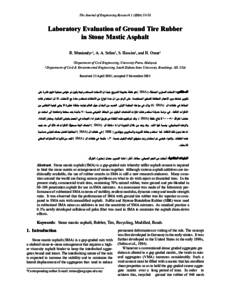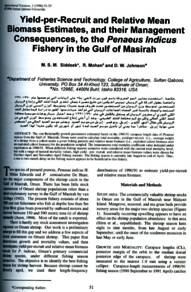Document
Pyrolysis of coconut shell: an experimental investigation.
Contributors
Natarajan, E., Author
Publisher
Sultan Qaboos University
Gregorian
2009
Language
English
Subject
English abstract
Fixed-bed slow pyrolysis experiments of coconut shell have been conducted to determine the effect of pyrolysis temperature, heating rate and particle size on the pyrolysis product yields. The effect of vapour residence time on the pyrolysis yield was also investigated by varying the reactor length. Pyrolysis experiments were performed at pyrolysis temperature between 400 and 600°C with a constant heating rate of 60°C/min and particle sizes of 1.18-1.80 mm. The optimum process conditions for maximizing the liquid yield from the coconut shell pyrolysis in a fixed bed reactor were also identified. The highest liquid yield was obtained at a pyrolysis temperature of 550 °C, particle size of 1.18-1.80 mm, with a heating rate of 60 °C/min in a 200 mm length reactor. The yield of obtained char, liquid and gas was 22-31 wt%, 38-44 wt% and 30-33 wt% respectively at different pyrolysis conditions. The results indicate that the effects of pyrolysis temperature and particle size on the pyrolysis yield are more significant than that of heating rate and residence time. The various characteristics of pyrolysis oil obtained under the optimum conditions for maximum liquid yield were identified on the basis of standard test methods.
Member of
ISSN
1726-6742
Resource URL
Citation
Sundaram, E. G., & Natarajan, E. (2009). Pyrolysis of coconut shell: an experimental investigation. The Journal of Engineering Research, 6 (2), 33-39.
Arabic abstract
تم إجراء التجارب على الانحلال البطيء لقشرة جوز الهند في وحدة مفاعل خاص من أجل تحديد تأثير درجة حرارة الانحلال، ومعدل الحرارة، وحجم الجسيمات على الغلة الناتجة. وكذلك تم دراسة تأثير وقت الإقامة للبخار على ناتج هذا الانحلال وذلك عن طريق تغيير طول المفاعل. وقد تم إجراء تجارب الانحلال الحراري في درجة الحرارة ما بين 400 إلى 600 درجة مئوية، وبمعدل تسخين ثابت يساوي 60 درجة مئوية لكل دقيقة، ومع أحجام الجسيمات في حدود 1.18 – 1.8 ملم. وقد تم تحديد الظروف المثالية من أجل تحقيق أقصى قدر من السائل العائد من جوز الهند أثناء الانحلال الحراري لقشرة جوز الهند. وقد وجد أن أقصى سائل عائد من جوز الهند تم الحصول عليه عندما كانت درجة الانحلال 550 درجة مئوية، وحجم الجسيمات في حدود 1.18 – 1.8 ملم. ومعدل التسخين 60 درجة منوية لكل دقيقة، و طول المفاعل 200 ملم. إن العائد المتحصل من الانحلال، والسائل، والغاز كان مساويا 31-22%، 44-38% و33-30% على التوالي تحت ظروف الانحلال الحراري المختلفة. وتشير النتائج إلى أن آثار درجة حرارة الانحلال الحراري وحجم الجسيمات على عائد عملية الانحلال هي أكثر أهمية بكثير من معدل التسخين ووقت الإقامة. كما أن مختلف الخصائص للزيت الناتجة عن الانحلال في ظل أفضل الظروف لتحقيق أقصى قدر من السائل تم قد تحديدها على أساس معيار طرق الاختبار.
Category
Journal articles

